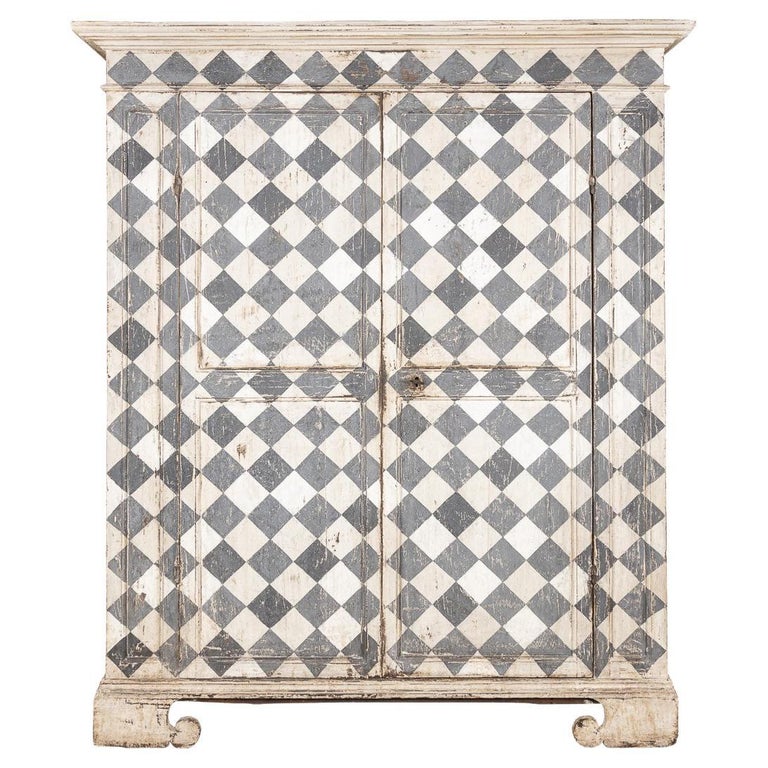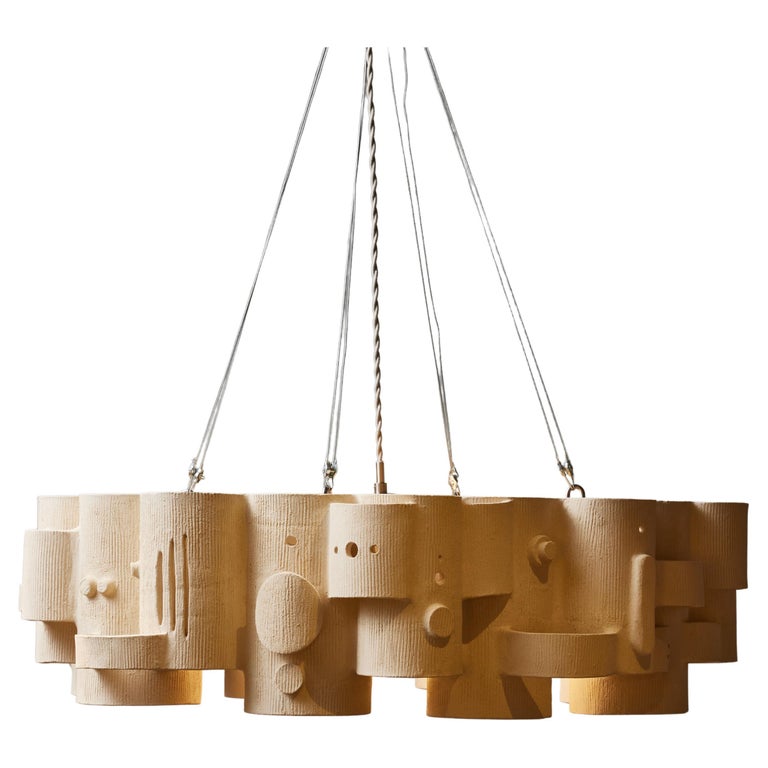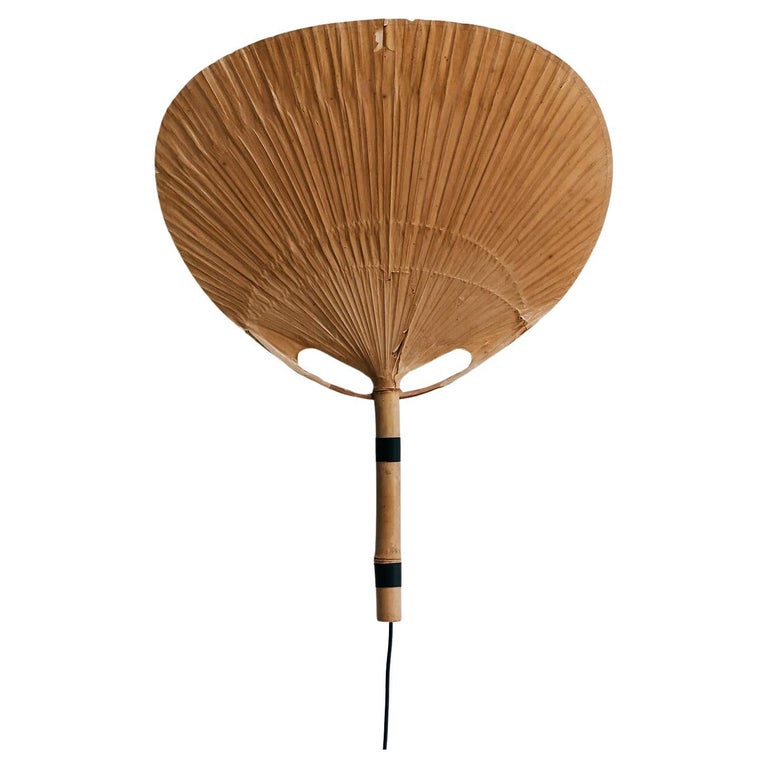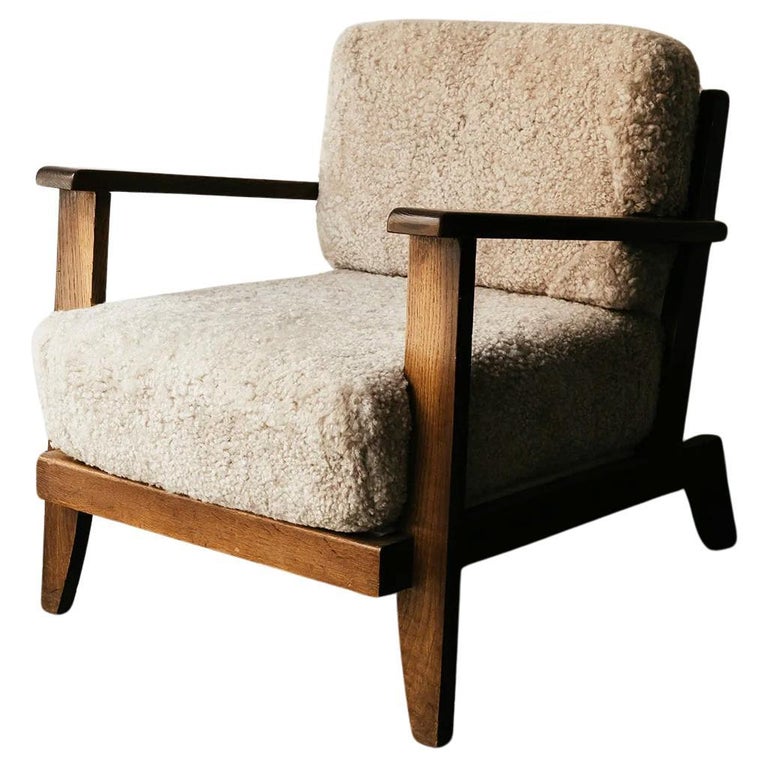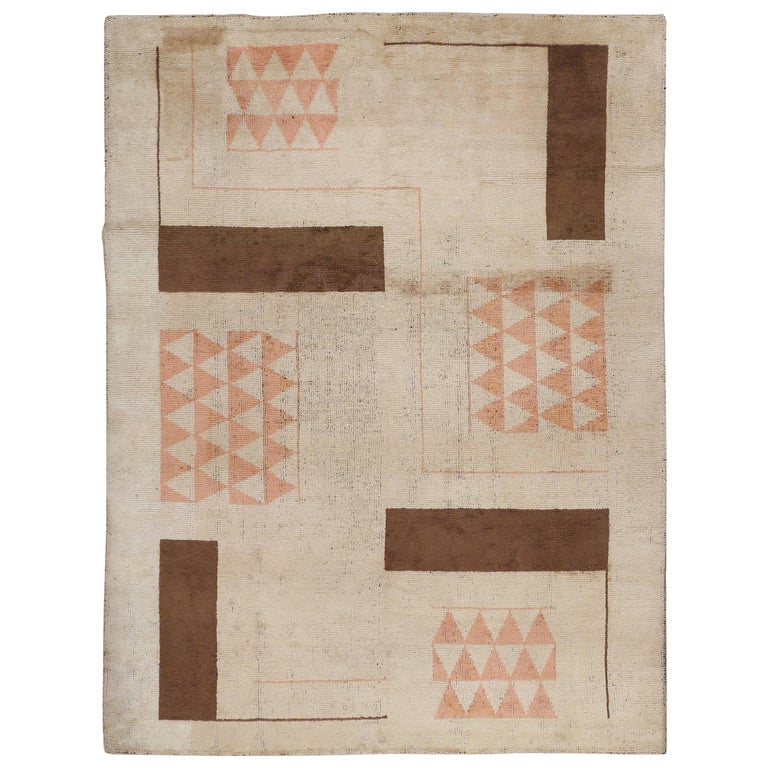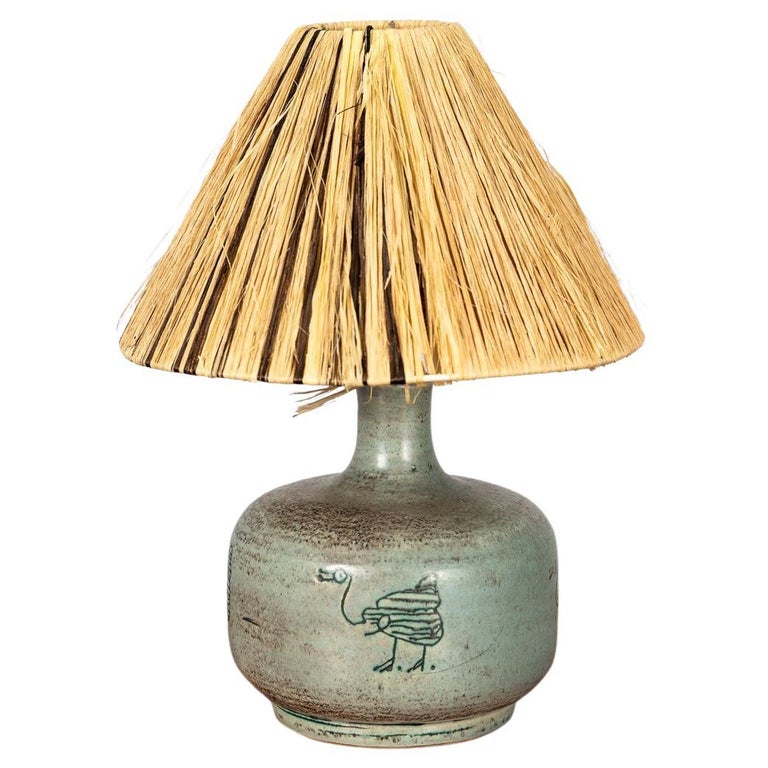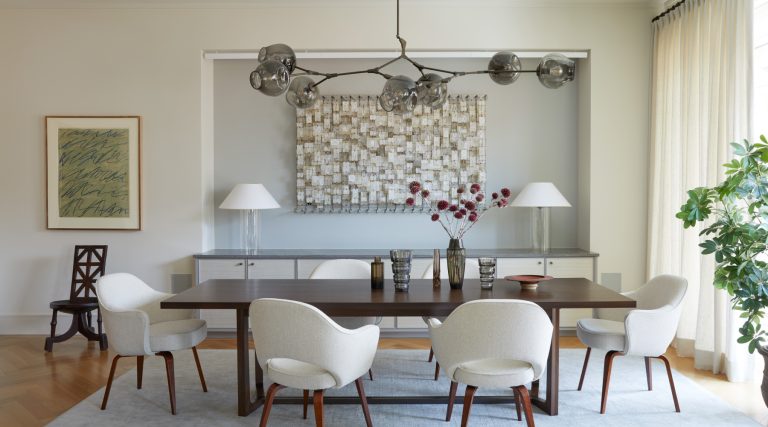June 30, 2024Benjamin Vandiver has always been something of a design chameleon. Since founding his interiors firm a dozen years ago, he has shown himself to be uncommonly adaptable, creating inviting, eye-catching rooms in diverse settings and styles, from traditional and sumptuously appointed to modern, clean-lined and spare.
For a time, Vandiver worried that his work lacked a signature. “I would think, ‘Oh, my God, I have no point of view,’ ” says the designer, who started out in Nashville but has been based in New York City since 2016 and leads his studio, Benjamin Vandiver Interiors + Lifestyle, from there. “I do projects from this end of the spectrum to that end. People are not going to know who I am.”

Eventually, he embraced that versatility as a strength. And for all their differences, his interiors share important through lines. Chief among these are their distinctive characters and affable vibes.
“One thing that hopefully has always remained the same is a sense of warmth, some might say coziness or a feeling of home,” says Vandiver, whose standout room at the most recent Kips Bay Decorator Show House in New York evoked a collector’s welcoming, well lived-in Paris aerie, an effect the designer achieved using his own cherished furniture, objects and art, which he amassed over many years.
Vandiver also has a knack for, as he puts it, doing “deep dives” into clients’ tastes and desires. Perhaps no project better illustrates that dynamic than the downtown Manhattan loft he renovated a couple of years ago for a then-single man in his 30s who was moving from San Francisco to New York with few possessions and little sense of how he wanted to live.

A revelatory get-together over “probably one too many drinks,” Vandiver says, was followed by a shopping trip to Paris, where he took the client on a tour of his regular stops at the flea market as well as of his favorite Left Bank furniture galleries.
“It was really interesting to watch someone who professed he cared nothing about design, cared nothing about art. I watched his eyes light up as he asked, ‘What do you think about that? What about this?’ ” recounts the designer. “We probably furnished eighty percent of his apartment that weekend.”
Among their vintage finds from that trip were a Michel Ducaroy sofa and loveseat covered in irresistibly soft caramel-hued leather, which now anchor the loft’s main sitting area, as well as the adjacent Willy Rizzo cocktail table and an Arne Jacobsen leather Egg chair, which offers a delightful spot for repose near the windows.
Vandiver rounded out the mix in the free-flowing entertaining spaces with distinctive pieces like an exquisite lacquered-goatskin Karl Springer dining table from Lobel Modern, for the dining area, and an L-shaped Alberto Rosselli Confidential sofa, which, along with an elegantly undulating circa 1940 Paolo Buffa bar cabinet, tucks into a cozy nook-like space tailor-made for intimate conversation and cocktails.

The designer’s usual complement of quirkier touches are present too. Take the recumbent COW sculpture surfaced with timeworn gilt that perches by the fireplace, which Vandiver surrounded with Breccia Viola marble. Or the framed 17th-century Tuscan wall tiles that preside over the hangout nook. Or the antique limestone column pedestals that wound up in the dining area but belong to the category of curios Vandiver acquired without knowing exactly how he would ultimately use them.
“In this type of project, I am looking for things because I love them and they reflect the client in some way,” says the designer. “Where does it go? I’m not sure until the last moment. But they’re beautiful things, so let’s see how they live together.”

Part of the goal throughout, says Vandiver, was to tone down the apartment’s formality and imbue it with a greater sense of livability, while inserting unexpected elements to keep things interesting. To this end, he lightened the pitch-black floors and refinished the walls in creamy, subtly textured plaster.
In the kitchen, he upholstered a corner banquette in Kuba cloth, its striking geometric patterns providing a lively counterpoint to the space’s existing glossy black paneling trimmed in metal with Art Moderne curves. “It was about, How can I make the apartment feel authentic to him and also to me, with the warmth factor?” Vandiver says.
Art also plays an important role. The designer and client built a collection from scratch, starting with the large, vibrantly hued, surreal portrait of cult leader Jim Jones by Sol Summers that hangs in the living area. “One of the very first things that went to the apartment, it ignited this passion inside of him, and he became a collector,” says Vandiver. “I connected him with a few art consultants, and he went for it.”

Vandiver estimates he was involved in acquiring around half of the artworks, including a poetic 1920s portrait of a woman by Louis Latapie that melds modern and classical elements. The client picked it out in Paris, much to Vandiver’s surprise. “He told me recently it’s his favorite piece in his apartment,” the designer says. “I never would have thought that. But that’s the beauty of being there together and not having an agenda.”
The portrait is installed in the bedroom in a shallow niche that Vandiver lined with circa 1900 gray and white reclaimed Spanish tiles in a checkerboard pattern. Beneath these, a chic vintage French scroll-arm sofa nestles with a West African Senufo table and refined mid-century Danish armchair.
“I’ve been at the apartment many times when there are fifteen or twenty people, and there is always a group sitting in this area,” says Vandiver, now a close friend of the client’s. “There’s usually a Polaroid camera there, and hundreds of photos have been taken against that tiled wall.”

The Louis XVI–style bed, with its sculpted foliate details, was a less-than-obvious choice for a bachelor (who has since married and become a father), but Vandiver selected it precisely for that unexpected quality. He had bought it years earlier in Paris without a particular client in mind, but “just because I thought it was great,” he explains. If no one else wanted it, he figured he’d keep it.
Vandiver, who is self-taught, says he developed his aesthetic sensibilities and passion for objects while growing up in Western Kentucky, thanks in part to his late grandmother.
“She collected every shelter magazine, which I would pore over as a kid, and she was very crafty, tactile, often redecorating her home,” he recalls. “She also sparked my love for gardens and flowers. Now, my ritual on Saturday mornings is to go to the Flower District and buy fresh flowers for the week.”

Vandiver didn’t find his design career path until what he describes as a “quarter-life crisis” prompted him to move from the West Coast, where he attended art school, to Nashville, which was closer to home. He took a job at a local design firm. Within months, he got an unexpected break when the singer Jessie Baylin and her husband, Nathan Followill, the drummer for the band Kings of Leon, hired him to renovate their Nashville home.
Jumping in feetfirst, he launched his own studio. Other projects soon followed, including ones for such prominent clients as actors Hayden Panettiere and Connie Britton. “It was a very rapid career development, to say the least,” Vandiver says.

Since relocating to New York, his practice has continued to thrive, with numerous projects for repeat clients. These days, Vandiver is working on residences from San Francisco to Dallas to Long Island’s East End, where two years ago he completed a gut renovation of a 1990s beach house in Sagaponack for a couple with children.
The brief was to create something light, airy and minimal —“calm and clean,” says Vandiver, who started by ripping out and replacing all the interior surfaces. The floors are now wide planks of warm natural oak, while most of the walls and ceilings are clad in crisp white tongue-and-groove paneling, except in the kitchen, where Vandiver used pearly gray tiles on the walls.


Throughout he inserted hits of eye-catching color, such as the kitchen’s candy-apple red Mathieu Matégot perforated-metal table, which is positioned beneath a vintage emerald pendant light and paired with French chairs attributed to Adrien Audoux and Frida Minet with woven rope seats and backs. “It’s not what you would expect in a classic kitchen,” says Vandiver. “That’s a thing I like to do, just to throw things off a bit and give the room life.”

In the living room, which is lined entirely in white shiplap paneling and has an octagonal vaulted ceiling, a pair of sofas with tubular wooden frames face a mid-century enameled-copper table by Swedish designer Algot Törneman.
Vintage Italian armchairs upholstered in a daffodil yellow fabric contribute a chromatic flourish, while a crumpled aluminum wall sculpture by Paul Morehouse serves as an edgy alternative to a conventional mirror above the fireplace. Between the windows on one side, Vandiver installed a striking dark bronze abstract floor sculpture composed of stacked irregular forms.
“Without the art, the room could have fallen flat,” says Vandiver, who found the unattributed bronze sculpture in the Hamptons. “It’s probably six hundred pounds. It adds a bit of idiosyncracy and extra interest.”

The dining room is similarly outfitted with charismatic vintage pieces. A Karl Springer table and a suite of Joe Colombo chairs are posed atop a Tuareg mat; a Charles Dudouyt credenza with carved geometric details provides storage and visual appeal. “It’s important, even in a more minimal space, to give some history, give some patina,” says Vandiver. “It’s not your typical beach-house dining room, though the chairs are covered in an outdoor Pierre Frey fabric so you can actually sit on them in your swimsuit.”

While far from a traditionalist, Vandiver has always had a strong affinity for fine craftsmanship, sophisticated materials and exquisite details, and he enjoys layering rooms with furnishings and objects. Working organically, intuitively, he relishes “getting into that headspace of truly creating,” he says, “thinking about proportion and balance in an idiosyncratic way. When I have freedom to do that, that’s when people walk into a space and go, I love it here.” Put another way, it just feels warm.

